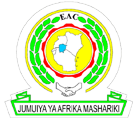Non-Tariff Measure
- NTM classification
- B84: Inspection requirement
- Date when the measure came into force
- 17 April 2015
- Publication where the measure is specified
- Statutory Instrument 2015 N0 11,To the Uganda Gazette No 19 Volume CVIII dated 17th /04/2015,(Import inspection and clearance) regulations, 2015
- Regulation where the measure is specified
- The Uganda National Bureau of standards (Import inspection and clearance) regulations 2015
- Country/Region applying the measure
- Uganda
- Coded list of objectives
- X: For purposes n.e.s.
- Description of the measure
- Section 3: Goods to be accompanied by a certificate of conformity or a certificate of road worthness
(1) The bureau shall carry out conformity assessment of all goods covered by compulsory standards destined for Uganda.
(2) The Bureau may appoint an inspection agency or agencies to acrry out conformity assessment of goods covered by compulsory stnadards destined for Uganda.
(3) An importer of a product covered by a compulsory standard specified in schedule 2 shall ensure that the supplier of the imported goods subjects them to inspection for conformity to standards in the country of origin and a certificate of conformity is issued before the goods are shipped to Uganda.
Schedule 2- Regulations 3(3),3(8) and 4(1)
1. Group I- Toys
2. Group II-Electrical Electronics
3. Group III- Automatic products and inputs
4. Group IV-Chemical products
5. Group V- Mechanical Materials and gas appliances
6. Group VI –Textile leather, plastic and rubber
7. Group VII--Furniture ( wood and Metal articles
8. Group VIII- Paper and stationary
9. Group IX protrctive safety equipments
10. Group X- food and food products
11. Group XI- Used products including motor vehicles
(4) An importer of a used motor vehicle into Uganda shall ensure that the motor vehicle is subjected to PVOC to ensure conformity to the prescribed Uganda standards and that a certificate of road worthness is used in respect of the motor vehicle
(5) The authorized officer of the inspection agency shall carry out conformity of the goods or motor vehicle to assess its compliance to the relevant standards upon receipt of an application from the exporter or importer.
(6) The application for acertificate of conformity or certificate of roadworthness shall be made in the prescribed form and shall be accompanied by the relevant documents.
(7) The application for a certificate of conformity or certificate of roadworthness shall pay the inspection fees and charges prescribed in schedule 1.
Schedule 1: regulation 3(7)
1 Where a sample is subjected to laboratory tests analysis, the importer shall be required to pay for the fee test charges as billed by the relevant laboratory
2 The fees and charges referred to in regulation (7) shall be as follows and shall be based on the value of import shipment.
(a) The applicable verification fees depend on the route, subject to the minimum and maximum detailed below;
the fees are payable by the exporter or manufacturer and payable in advance.
Route A (unregistered Products)
0.500% of FOB value subject to aminimum of US $ 220 and maximum US $ 2.375
Route B: (registered products)
0.45% of FOB value subject to aminimum of US $ 220 and Maximum of US $ 2,375
Rote C (Licensed products)
Licensed products (0.25% of FOB value subject toi a minimum of US $ 220 and maximum of US $ 2375.
(b) Used cars
Inspection fees
Fees payable upon inspection will vary depending on acountry of origin as specified below;
Japan (US $ 140)
Singapore ( US $ 180)
United Kingdom (BCP 125)
South Africa ( R 1685) and
United Arab Emirates (Dubai) (US $ 125)
Testing Fees: determined as a case by case basis
(8) A person who imports goods specified in schedule 2 withiout a certificated of conformity or certificate of roadworthness shall pay a surcharge of 15% of CIF value of goods and the goods shall be subjected to a destination inspection.
(9) The inspection agency shall issue the applicant with a certificate of conformity or certificate of roadworthness where the product complies with the requirements of the relevant standards
(10) The destination inspection agency shall issue non-conformity report for the goods or motor vehicles where the product does not conform to the requirements of the relevant standards and shall notify the Bureau.
Section 4 Application for import Clearance certificate
(1) The Importer of goods or motor vehicle covered by acompulsory standard specified in schedule 2 shall apply to the bureau for an import clearance certificate upon arrival of the goods at the port of entry.
(2) The application shall be made prior to or upon arrival of the goods or motor vehicle at the point of entry but prior to the release of the goods or motor vehicle to the importer by the Uganda revenue authority
(3) the application for an import clearance certificate shall be made in the prescribed form and shall be accompanied by acertificate of conformity or clearance of roadworthness together with the relevant customs documents.
Section 5. Handling of an application
(1) The authorized officer shall, upon receipt of an application verify the documents to ensure that the application is duly filled and accompanied by all necessary certificated of roadworthness.
(2) The authority officer shall verify the goods or motor vehicle to ensure that they match with the declaration in the application in the certificate of conformity or certificate of road worthness
(3) The authorized officer shall subject goods that are not accompanied by acertificate of conformity or certificate of roadworthness to destination inspection after payment of relevant surcharge fees.
(4) The authorized officer shall subject goods or motor vehicles that do not match with the certificate of conformity or certificate of roadworthness to destination inspection.
(5) The authorized officer shall issue an import clearance certificate in respect of goods or motor vehicles which have been verified and found to have been duly inspected from the country of origin and issued with certificate of conformity or a certificate of roadworthness and where the authorized officer finds finds no reason to doubt compliance with the relevant standards in Uganda.
(6) The authorized officer may subject the goods to destination inspection where he or she finds reason to doubt compliance with the relevant standards in Uganda.
(7) The authorized officer shall issue an import clearance certificate in respect of the goods where the goods have been subjected to destination inspection and have been determined to confirm to the relevant Uganda standards.
(8) In the case of goods, the inspector shall before issuing an import clearance certificate ensure that the products have adefined and marked shelf life of atleast-
(a) 75% of food stauff; and
(b) 50% of all non-food staffs
6. Release of goods withiout issue of certificate.
An authorized officer shall not release goods or motor vehicles from appoint of entry, other than to abonded warehouse, unless the importer of the goods or motor vehicle has been issued with an importer clearance certificate
7. Products with Uganda certification mark
An importer of a product manufactured outside East African Community (EAC) region in respect of which has has been issued a permit to use the Uganda certificate mark, shall not be subjected to PVOC.
8. Producs manufactured within the EAC partner states
An importer of a produc manufactured within EAC common market and which bear the certification marks of the respective EAC partner states shall be subjected to import clearance but shall be exempted from PVOC.
10. Absence of service providers
A person who imports goods or motor vehicles from a country that is not covered by a service provider shall have goods subjected to destination inspection fee but shall be exempted from 15% of CIF surcharge.
11. Handling of non-conforming goods or motor vehicles.
(1) Goods or motor vehicles which have been issued a seizure with a seizure notice shall be handled in accordance with the best practices and as recommended by the authorized officer at the expense of the importer.
(2) Goods or motor vehicles which have been issued with a seizure with a seizure , notice and have been deemed not to confirm to the applicable compulsory standard (s) shall either be destroyed or re-exported.
(3) Goods or motor vehicles which have been issued aseizure notice and determined by an authorized officer not to pose asignificant risk to the environment may be destroyed withiout re-exportation.
(4) Goods or motor vehicles which have been issued aseizure notice and determined by an authorized officer to pose asignificant risk to the environment shall be re-exported to the country of origin.
(5) Goods or motor vehicles which have been issued aseizure notice shall not be re-exported to another country other than the country of origin.
(6) The destruction of the goods or motor vehicles which have been issued aseizure notice shall be done in accordance with the relevant national regulations and guidelines
!2. Destination Inspection
(1) Goods or motor vehicles specified in schedule 2 which arrive at a point of entry withiout a certificate of conformity or certificate of roadworthness shall be subjected to asurcah of 15% of CIF in addition to the payment of the prescribed inspection fees before destination inspection is undertaken.
(2) All goods or motor vehicles subjected to destination inspection shall be subjected to payment of the prescribed inspection fees.
(3) The importer of goods or motor vehicles shall be responsible for the costs of storage, analysis and any other incidental charges incurred during destination inspection.
(4) The goods or motor vehicles subject to destination inspection shall be inspected and evaluated by the authorized officer or designated agency to determine conformity with relevant Uganda standards.
(5) The authorized officer or designated inspection agency may take a sample for laboratory analysis during the destination inspection to determine conformity with relevant Uganda standards.
(6) The authorized officer shall issue an import clearance certificate in respect of goods or motor vehicles where goods or motor vehicles have been determined to conform to relevant Uganda standards during destination inspection.
(7) The authorized officer shall issue aseizure notice and notify the relevant authorities including the designated inspection agency and where applicable the Uganda revenue authority and the goods or motor vehicles shall not be permitted entry into domestic market where goods or motor vehicles have been subjected to destination inspection and have been determined not to confirm to the relevant Uganda standards.
13.Release Under Seal
(1) An inspector may release goods under seal where the importer has cleared with the requirements of Uganda revenue authority but the bureau has subjected the goods to inspection, sampling, testing and evaluation.
(2) The release under seal is subject to payment of an administration fee prescribed in schedule 1 in addition to inspection fee.
Schedule 1 Release Under Seal fees regulation 12(2)
(3) A cash bond worth 15% of the CIF vakue of the goods shall be presented before the release under seal.
(4) The cahs bond shall be excuted when the goods do not meet the requirements of the standard so as to cate for the costs of destruction or re-exportation.
(5) The cahs bond shall be returned to the exporter once the importer is issued with an import clearance certificate.
14. Exemption
All goods specified in schedule 3 shall be exempted from PVOC programme.
Schedule 3. Exemptions regulation 13.
-General goods whose FOB does not exceed US 2000
-Prohobited goods according to the EAC customs management Act 2006 and the East Africa stanadards catalogue and quality assurance and testing Act (SQMT) 2006 and any other laws of the community
-Government project specific goods
-Raw materials which were brought in for manufacturing process and not for sale.
-Diplomatic cargo.
-Personal effects
-Goods that are not covered by compulsory standards
-Certified goods including those from the EAC partner states
-Industrial machinery and spare parts not for re-sale
-Re-exports from within the EAC that have undergone PVOC with relevant valid traceable certificates of conformity for the EAC partner states for re-export
-Classified military, police and prisons hardware and equipment - Reference of the measure
- Section 3(4,5,9), section 5 (6-7) & section 12
- Measure also domestic
- Yes
Products affected by the measure.
| Code | Product | Partial coverage | Partial coverage indication | Date in | Date out |
|---|---|---|---|---|---|
| 9503.00.00 | Tricycles, scooters, pedal cars and similar wheeled toys; dolls' carriages; dolls; other toys; reduced-size ("scale") models and similar recreational models, working or not; puzzles of all kinds. | No | |||
| 85 | Electrical machinery and equipment and parts thereof; sound recorders and reproducers, television image and sound recorders and reproducers, and parts and accessories of such articles | Yes | Electrical Electronics | ||
| PG: 32 | Textile products | No | |||
| 39 | Plastics and articles thereof | No | |||
| 40 | Rubber and articles thereof | No | |||
| 42 | Articles of leather; saddlery and harness; travel goods, handbags and similar containers; articles of animal gut (other than silk- worm gut) | Yes | leather | ||
| 94 | CHAPTER | Yes | wood and Metal articles | ||
| 48 | Paper and paperboard; articles of paper pulp, of paper or of paperboard | No | |||
| 49 | Printed books, newspapers, pictures and other products of the printing industry; manuscripts, typescripts and plans | No | |||
| 87 | Vehicles other than railway or tramway rolling- stock,and parts and accessories thereof | Yes | used | ||
| PG: 7 | Food products | No | |||
| 64 | Footwear, gaiters and the like; parts of such articles | Yes | leather |
- Description
- Schedule 2- Regulations 3(3),3(8) and 4(1)
1. Group I- Toys
2. Group II-Electrical Electronics
3. Group III- Automatic products and inputs
4. Group IV-Chemical products
5. Group V- Mechanical Materials and gas appliances
6. Group VI –Textile leather, plastic and rubber
7. Group VII--Furniture ( wood and Metal articles
8. Group VIII- Paper and stationary
9. Group IX protrctive safety equipments
10. Group X- food and food products
11. Group XI- Used products including motor vehicles
Countries/Regions affected by the measure.
| Inclusion/Exclusion | Country | Date in | Date out |
|---|---|---|---|
| Inclusion | Entire world | 17 April 2015 |
- Description
- All countries



 English
English Français
Français
